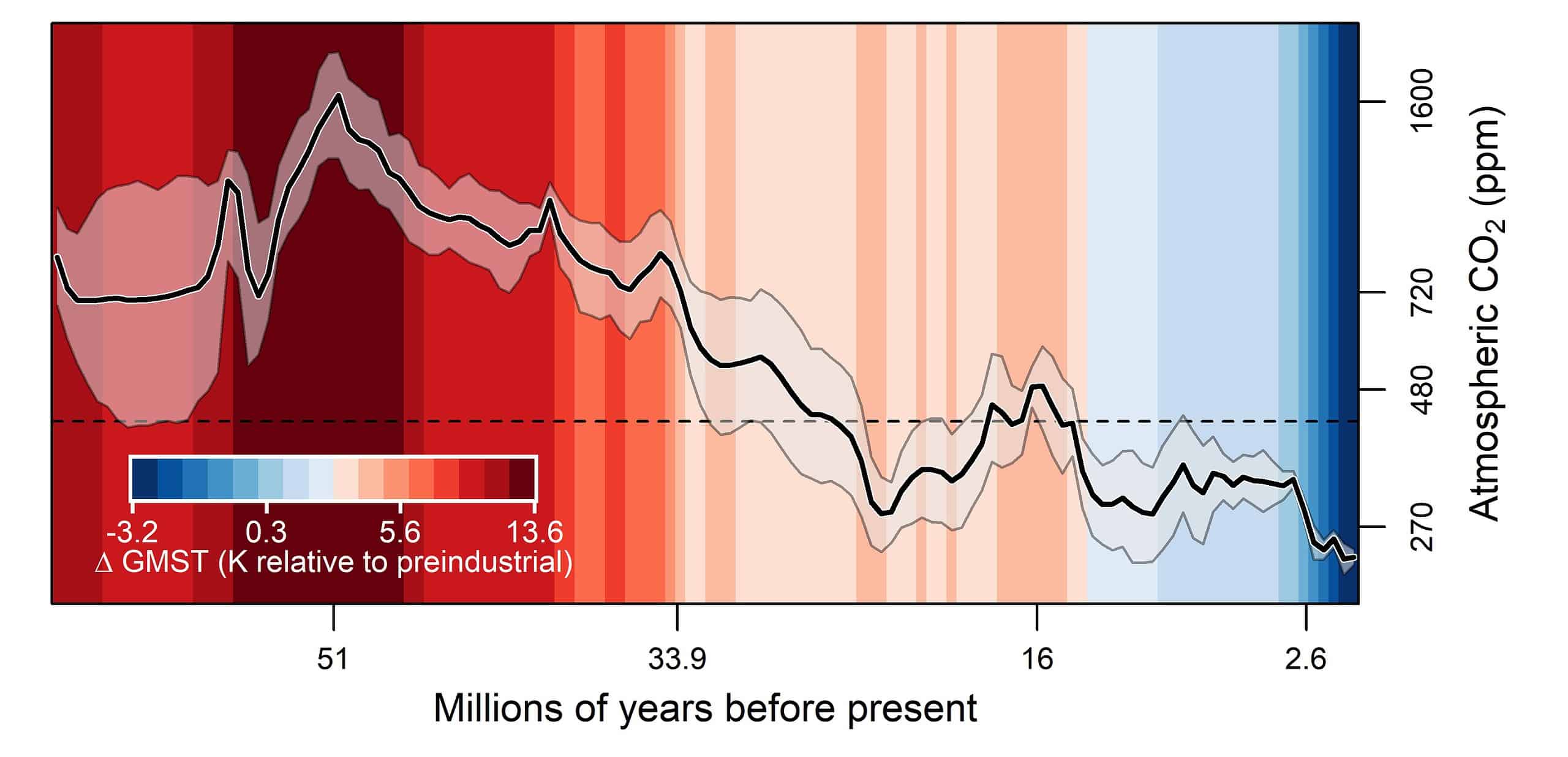Today, carbon dioxide (CO2), a greenhouse gas, is at its highest level in the atmosphere in at least several million years — mainly due to the fossil fuels burned by humans over the past two centuries. But where does the current concentration of CO2, 419 parts per million (ppm), fit into Earth’s history? That’s what researchers want to find out.

An international team of climate scientists are looking at a plethora of markers in the geological record to get clues about the contents of ancient atmospheres. Their first study, published in Science, reconstructs CO2 concentrations that go back through the Cenozoic, the era that started with the rise of mammals 66 million years ago.
Glaciers contain air bubbles that have provided scientists with evidence of CO2 levels going back 800,000 years. But this record doesn’t go very deep into the geological past. “Once you lose the ice cores, you lose direct evidence. You no longer have samples of atmospheric gas that you can analyze,” Prof. Gabe Bowen, a corresponding author on this study, said in a news release.
That’s why researchers have to rely on indirect evidence, what they call proxies. These include isotopes in minerals, the morphology of fossilized leaves and other geological evidence. One of the proxies comes from previous studies from Thure Cerling, a co-author of this study, who found that carbon isotopes in ancient soils indicate past CO2 levels.
However, the strength of these proxies changes and most cover just narrow slices of the past. The researchers, grouped under the Cenozoic CO2 Proxy Integration Project, created by climate scientist Bärbel Hönisch, set out to evaluate, categorize and integrate available proxies in order to create a reliable record of atmospheric CO2.
“This represents some of the most inclusive and statistically refined approaches to interpreting CO2 over the last 66 million years,” co-author Dustin Harper said in a news release. “Some of the new takeaways are we’re able to combine multiple proxies from different archives of sediment, whether that’s in the ocean or on land, and that really hasn’t been done at this scale.”
Growing emissions
At the beginning of the Industrial Revolution, when humans started burning fossil fuels, atmospheric CO2 was at 280 ppm. Because carbon dioxide is released with the burning of these fuels, the levels have steadily increased. Looking forward, concentrations are expected to reach up to 600 to 1,000 ppm by the year 2100, depending on what humans do in order to bring down the emissions.
It’s not fully clear how these future levels will influence the climate. However, having a reliable map of past CO2 levels can help scientists more accurately predict what the future climate may look like. “This is an incredibly important synthesis and has implications for future climate change as well,” Willian Anderegg, a researcher at Utah University, not involved in the study, said in a news release.
Today’s 419 ppm is the highest level of CO2 reached in the last 14 million years. When the Earth was a far warmer place, levels of CO2 were much higher than they are now. Still, the levels recorded today represent a dangerous spike in recent geologic history. Bowen said that there’s only a 5% chance that eight million years ago CO2 levels were as high as they are today.
In other words, human actions have profoundly changed the Earth’s atmosphere in just a few generations. Consequently, there are disturbing indications of disruption in global climate systems, including intense storms, extended periods of drought, deadly heatwaves, and the acidification of oceans — among many others.
A comprehensive understanding of the historical fluctuations in atmospheric CO2 over geological periods is crucial for unravelling and gaining insight from diverse aspects of Earth’s past. Shifts in atmospheric CO2 levels and climate probably played a role in both mass extinctions and evolutionary breakthroughs, such as the dinosaurs’ extinction during the Cenozoic.
“A more refined understanding of past trends in CO2 is therefore central to understanding how modern species and ecosystems arose and may fare in the future,” the study states.









